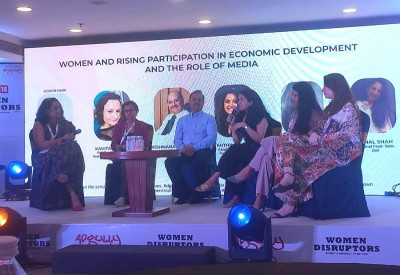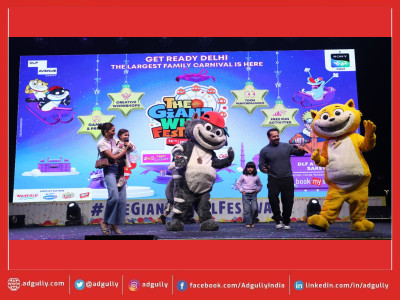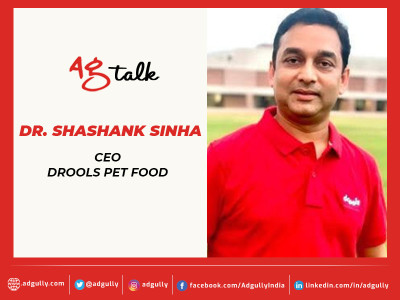Women and their growing participation in economic development
Into its 4th year now, WOMEN DISRUPTORS, brought by Adgully, has become an industry standard in recognising and celebrating the outstanding achievements of women leaders of India from across sectors, who are bringing about a positive and definitive change not just in their organisations, but the industry and society as well.
Over the years, women leaders have proved more than their mettle on their capabilities, crisis handling expertise, leading forward businesses as well as turning obstacles into growth opportunities.
Women Disruptors 2023 comes at an interesting inflexion point when digital and technology are making even deeper inroads than before in all spheres of business as well as our lives.
In order to reduce poverty and achieve sustainable economic growth, women must be actively involved in economic development. Women contribute significantly to the economy through entrepreneurship, employment, and unpaid care work. Broadly, the media has an important role to play in promoting women's economic empowerment and gender equality. A more inclusive and equitable society can be created by highlighting women’s contributions to the economy and promoting policies and initiatives that support them. With the growth and development in all the sectors, Adgully hosted a panel discussion during the 4th edition of Women Disruptors on the topic “Women and Rising Participation in Economic Development and the Role of Media”. The session was chaired by Dipika Singh, Learning Facilitator and Motivational Speaker. The esteemed panellists included:
Kavita Thakur, Vice President - Media, South Asia, Insights Division, Kantar
Krishnarao Buddha, Senior Category Head, Parle
Mithila Saraf, Chief Executive Officer, Famous Innovations
Shalu Zala, Head Brand & Marcom - Enterprise Vodafone Idea Limited
Sonal Shah, National Head - Sales, Zee
Dipika Singh commenced the session by stating that she had both good news and bad news to convey. Dispensing with the bad news first, Singh said, “The bad news is that women’s participation in the economic workforce has been falling – last year, it was 18%.” At the same time, the good news is that the data doesn’t take into count the informal workforce. “Recently, I heard a very heartening podcast, where this gentleman shared that women in Tier 2 and 3 cities are learning how to apply make-up via YouTube or leverage digital platforms. They are actually offering make-up services for small weddings as well,” she pointed out.
Singh noted that a lot of this has been driven by digital creators, but asked the panellists whether organised media saw an opportunity here. Responding to this question, Mithila Saraf said, “When it comes to organised media, fundamentally what we all do is storytelling. That is core to changing the narrative in the long term in any economy. What we in organised media narrate while creating more inspiring female role models, goes a long way. Unfortunately, in terms of mainstream television, we are far behind.”
She further noted, “Today, we know that organised media tends to follow where advertisers’ money is going. Fintech and e-commerce are two categories that more focused on the Tier 2 and 3 markets.”
Speaking about the depiction of gender roles in media, Shalu Zala said, “Children often internalise these stereotypical gender roles that they pick up from movies, series, songs, and books that they read. We see that TV often emphasises a lot on being strong, but when it comes to women, it’s more like being attractive or desirable. Of course, we have been seeing a shift in trends, and a lot of it is from the OTT platforms. We need more realistic characters, we don’t want 100% perfect role models but someone with whom we can relate to. I think we should stop trying to create a hero out of every character.”
“Right from beginning with Zee, we came up with very individualistic characters in terms of protagonists like ‘Tara’, ‘Astitva Ek Prem Kahani’, and currently as well, if you see the fiction shows, each of them reaches out to the Tier 1 and 2 markets where a woman is portrayed not just as a homemaker, but someone who has different nuances of life and is a reflection of the current woman,” Sonal Shah added here.
Giving a marketer’s perspective, Krishnarao Buddha said, “As far as consumption among women is concerned, generally women have been the key influencer across categories. An evolution has occurred within the decade in terms of using technology. Several other initiatives like Zero Balance Accounts, Opening General Yojana, etc., have actually propelled the usage of UPI to smaller towns as well. A clear indication of that is the rapid spread of e-commerce in these towns. Portals like Nykaa and Myntra know that they have significant sections of purchases coming from women. Beside e-commerce, there are a lot many brands targeting women because they see greater opportunities there.”
Here, Kavita Thakur turned the spotlight on the issue of women’s safety and said, “Safety is a prime concern not just in small towns, but in metro cities as well. We are considering women’s safety as one of the most important deliverables from an HR perspective. If you work till late, you have a cab, but have we done the last mile connectivity check? Do organisations have clear cut policies about safely dropping off their women workforce home after work?”
These are edited excerpts. For the complete discussion, watch below:


















Share
Facebook
YouTube
Tweet
Twitter
LinkedIn